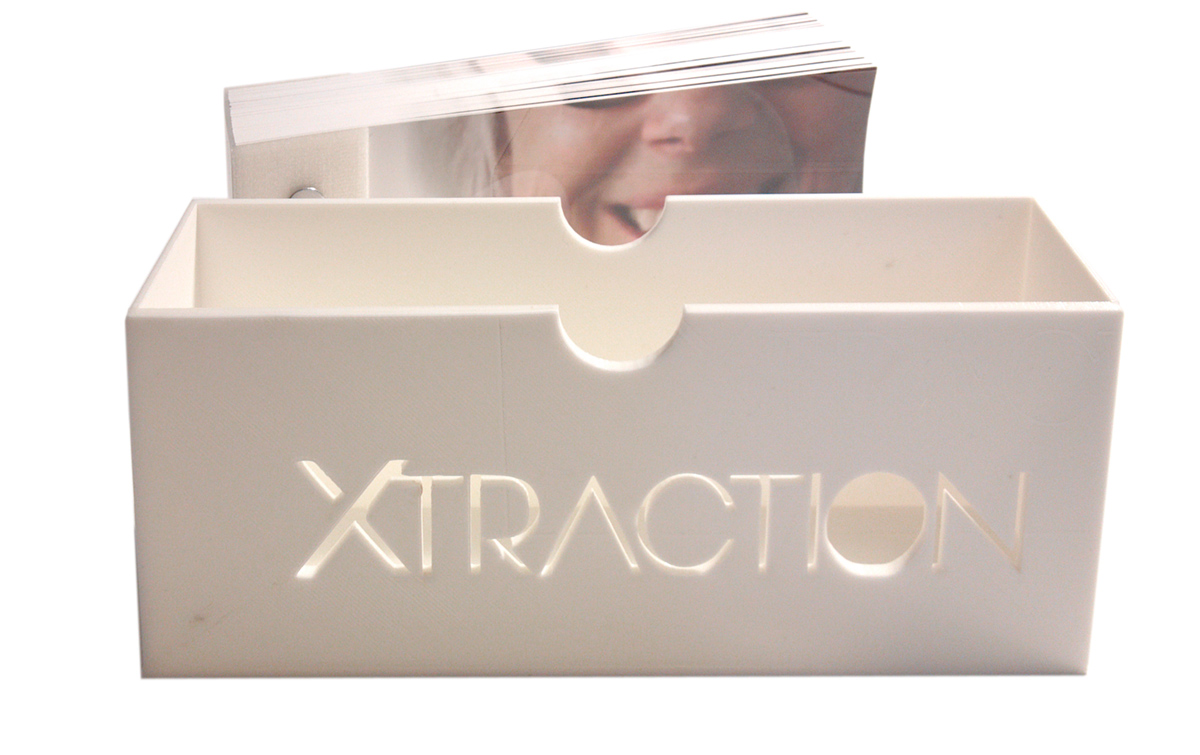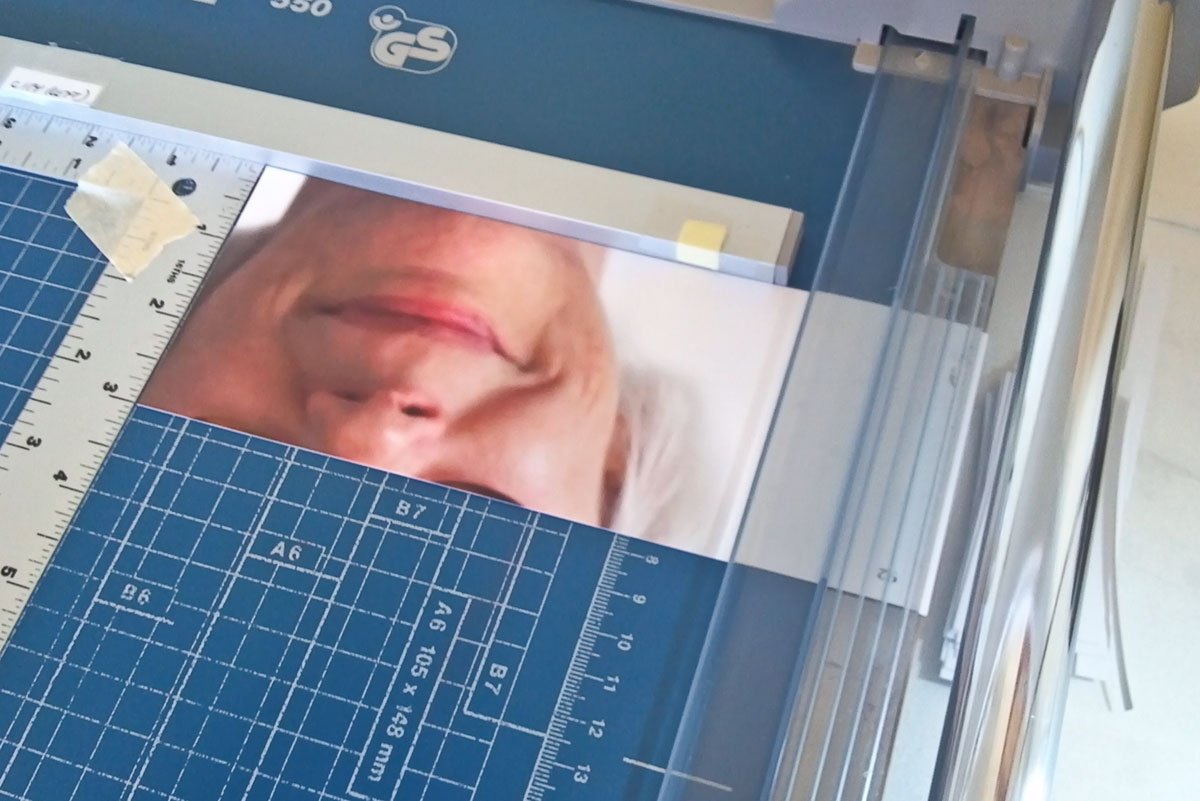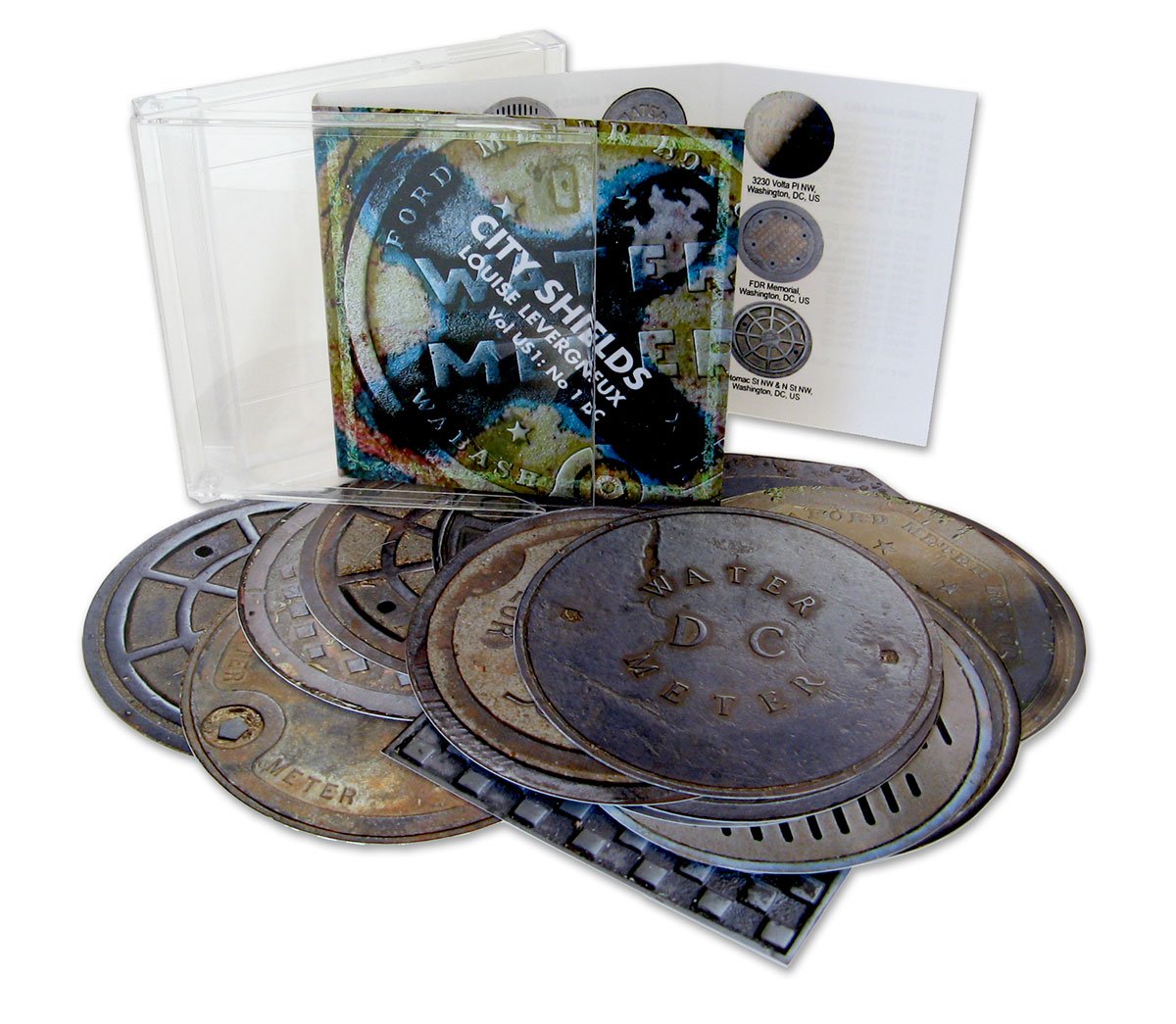Last week, I re-drew the final element in Tinkercad for my artists’ book Finding Home. Major problems were surfacing, and the results were not good. Defeat, no way! This simple structure can be 3D printed, I’m sure.
My solution was to break down the sections of my structure into 7 pieces and once printed I would glue the sections together. The question remained, will the parts fit together? I’m hoping it works!
Friday, I travelled one more time to Unbound to retrieve my work. Well, surprise! surprise! every part fit, amazing!! Persistence as always served me well.
The slipcase for my book Xtraction was also a success. My strategy worked. I’m excited to finish these projects. J'ai le vent en poupe ! I’m on a roll! as they say. I will elaborate on this project later, but here is a photo of the result of the last 3D print of Xtraction's slipcase.
© 2016, Louise Levergneux, 3D printed slipcase for Xtraction
Last week we visited the compelling Clock Drawings by Adrian Göllner. One more drawing from the series is worth looking into because of it’s interesting history.
The MGM blockbuster movie Ben Hur made its screen debut in 1925. Borrowing on its success, the Westclox Clock Company designed a handsome, roman-style alarm clock, which they called the Ben Hur and began marketing in 1927. The Ben Hur clock in my collection was purchased at Rideau Antiques in the Ottawa Valley, so it had likely been the property of a farm family in the vicinity. A mark on the reverse indicates that it had been serviced in 1942, but sometime after that it ceased to run and a repairman scavenged its winding keys. The clock is in poor condition and the spring was broken, but the alarm spring was still partially wound. I suspended the clock movement above a piece of carbon paper and then triggered the alarm. The alarm hammer struck the surface for several seconds. A decidedly men’s-style alarm clock, one might conclude that it was a birthday or Christmas gift for the father of a household. Perhaps he had traveled to the big city, seen the movie and now his family honoured him with a clock of the same name. If that is the case, then memories of the movie and thoughts of his family were an inextricable part of the energy coiled on the alarm spring and which made the marks upon the paper.
© 2010 Adrian Göllner
Another series, another device. Adrian’s project the Norwegian Wood Drawings configures a turntable so that the vibrations of the needle are transferred onto a drawing surface.
© 2012, Adrian Göllner, Norwegian Wood Drawing Mechanism
A vinyl recording plays on the turntable causing the speaker’s woofer and attached pen to vibrate. The pen is slowly drawn backward across the drawing surface that itself rotates at 33 1/3 rpm.
Adrian’s intention was to divine the shape of John Lennon's loneliness from the grooves of his old Beatles albums.
“A brilliant but troubled song songwriter, rejection and self loathing underlie many of Lennon's most enduring songs: Girl, I'm a Loser, Help and Norwegian Wood. Speculative? Absolutely. But even the consideration that the lines before us contain the essence of John Lennon’s loneliness make these drawings both curious and compelling.”—Adrian Göllner
© 2012 Adrian Göllner, Come Together, ink on vellum, 34 x 22 inches
© 2012 Adrian Göllner, I Want You, ink on vellum, 34 x 22 inches
© 2012 Adrian Göllner, Across the Universe, ink on vellum, 34 x 22 inches
The studio of James G. Jenkins is part of the Water Street Studios an artist co-op in Batavia, Illinois. Lucky to meet this talented artist, luckier to have him as a friend.
Drawing the Line(Somewhere) was made on one of the many bicycle paths around Batavia, Illinois. The reason for building this device was to "connect the dots" around the world to all areas suffering from climate & environmental problems. "We all must "draw the line" on something," says Jenkins. I use this device and performance to demonstrate it.
© James G. Jenkins, Drawing the Line(Somewhere)
James also notified the Museum of Contemporary Art in Chicago that he would be "drawing rings around them." This drawing is from that performance.
© 2004-2006 James G. Jenkins, Drawing the Line(Somewhere), detail of drawing
James’s sculptures provide a theme for both intellectual and visual curiosity. They contain road maps directing the observer through a process of distillation and fusion of contrasting ideas and investigative humour. James a genius at work is always happy to show you around his studio and direct you to the actual installations around Illinois. If you are in Illinois, James's studio is worth the visit!
These wonderful well thought out art pieces leave me with deep thoughts...




























